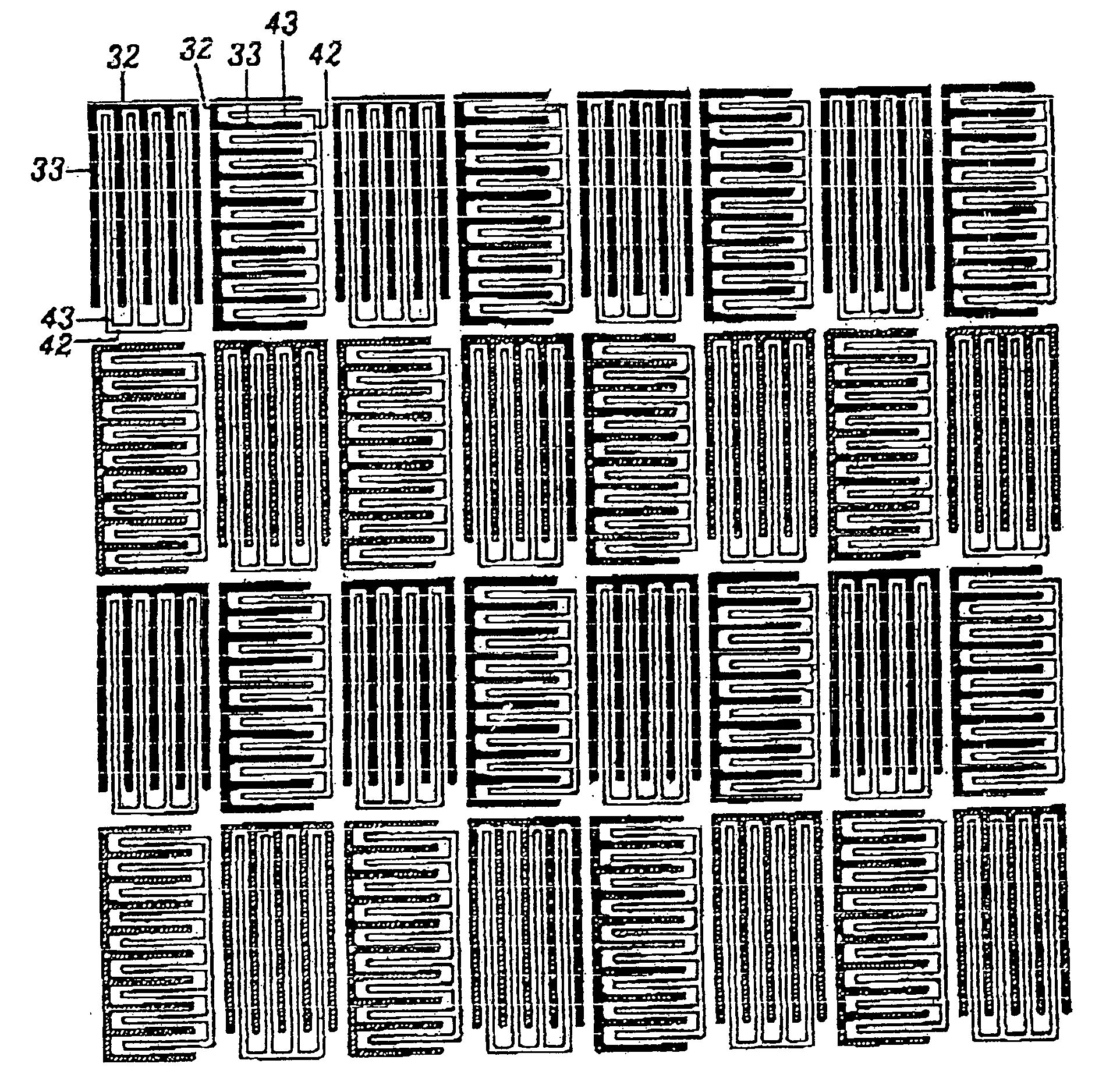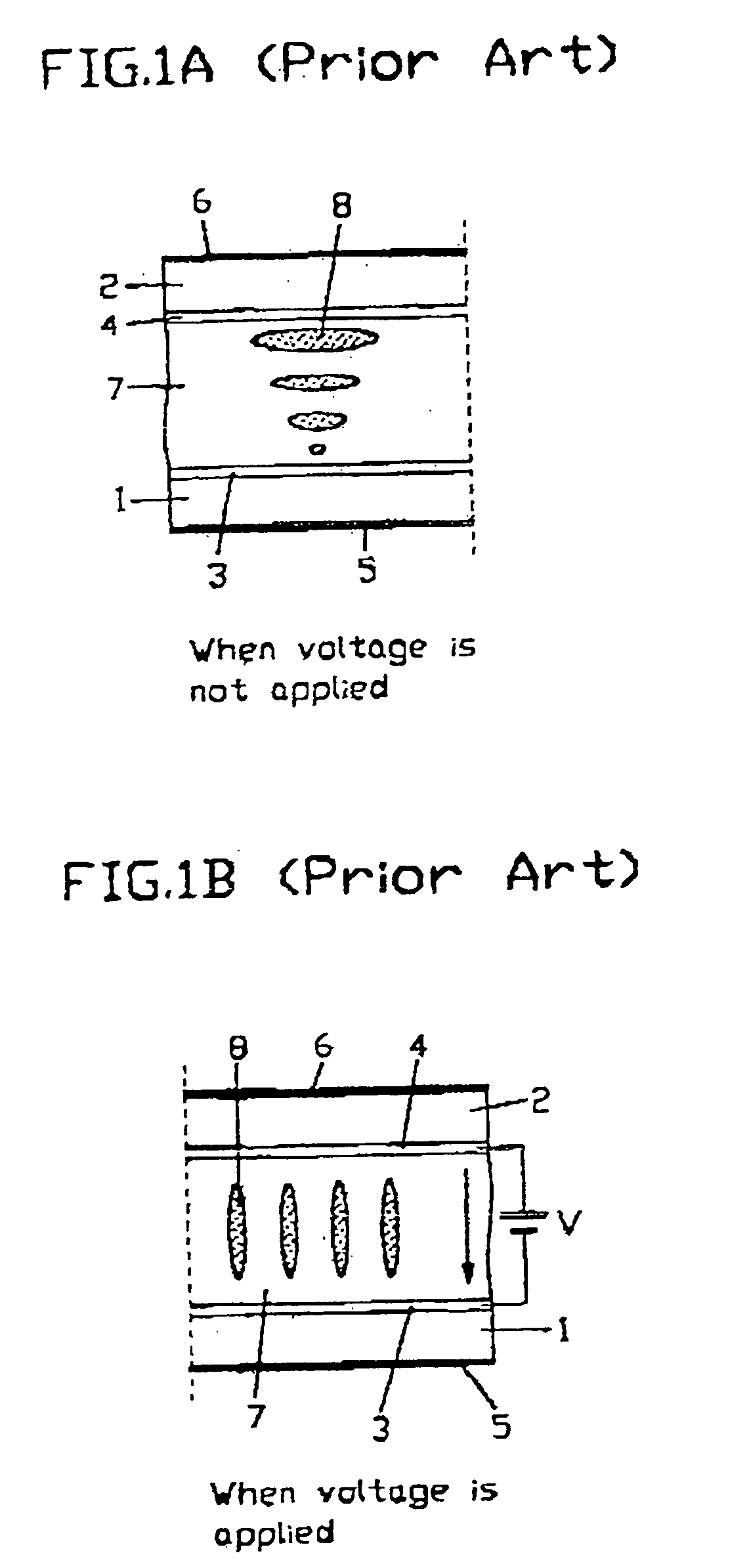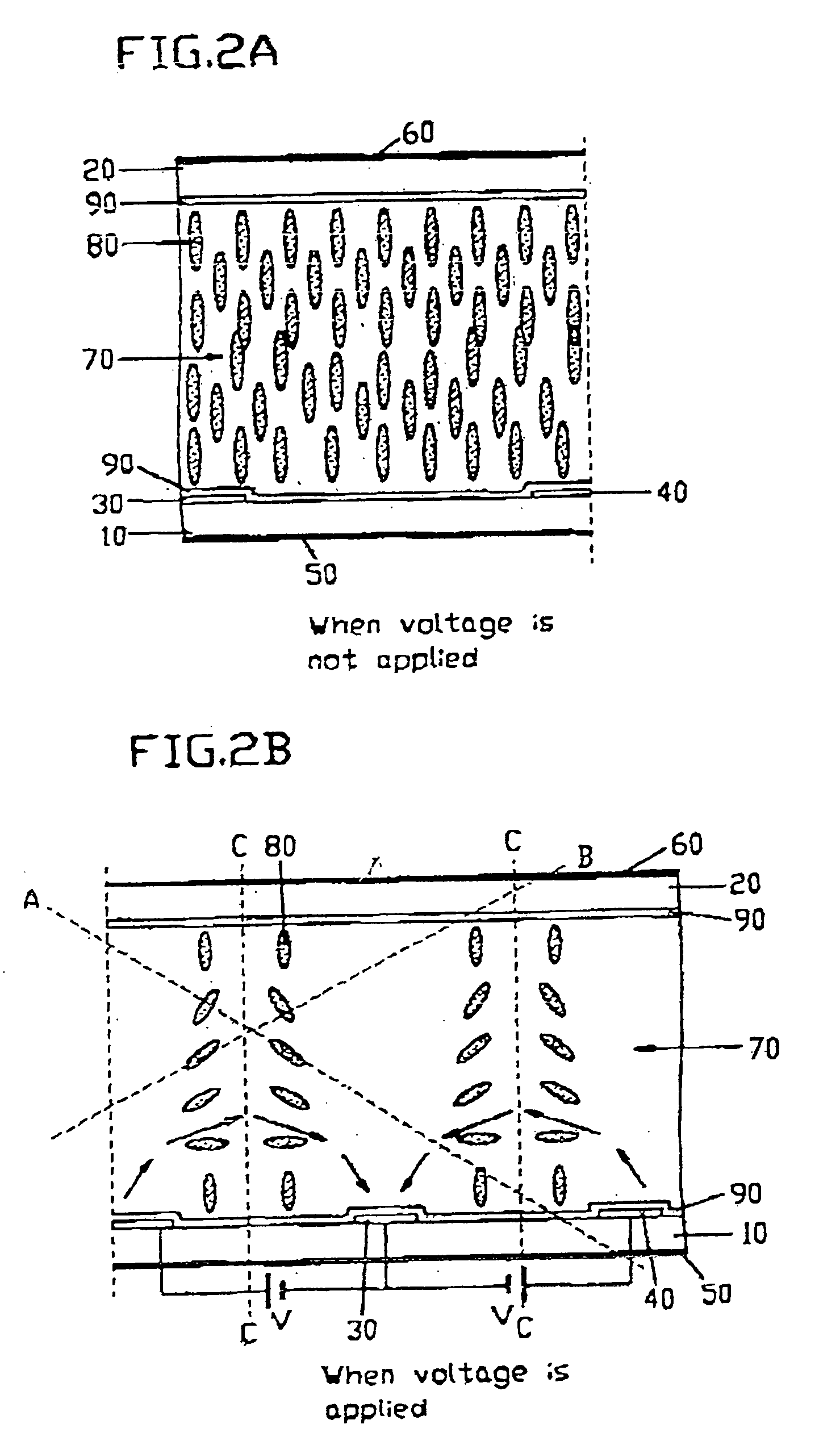Liquid crystal display
a liquid crystal display and display technology, applied in non-linear optics, instruments, optics, etc., can solve problems such as narrow viewing angles, and achieve the effect of wide viewing angles
- Summary
- Abstract
- Description
- Claims
- Application Information
AI Technical Summary
Benefits of technology
Problems solved by technology
Method used
Image
Examples
Embodiment Construction
[0029] Embodiments of the present invention will become apparent from a study of the following detailed description when viewed in light of drawings.
[0030]FIGS. 2A to 2C and 3A to 3C illustrate basic driving principles of EOC-LCDs according to a first and a second embodiment of the present invention.
[0031] Referring to FIGS. 2 to 2C and 3A to 3C, a pair of transparent glass substrates 10 and 20 respectively having alignment films 90 are facing each other. Two linear electrodes 30 and 40 parallel to each other are formed on the inner surface of the lower substrate 10 of the substrates 10 and 20. The liquid crystal layer 70 is injected between the substrates 10 and 20. The liquid crystal molecules 80 of the liquid crystal layer 70 are homeotropically aligned, and thus they are perpendicular to the substrates 10 and 20. The liquid crystal molecules 80 may have a pre-tilt angle with respect to the substrates 10 and 20. The electrodes 30 and 40 may be transparent or opaque conductive m...
PUM
| Property | Measurement | Unit |
|---|---|---|
| angle | aaaaa | aaaaa |
| bent angle | aaaaa | aaaaa |
| bent angle | aaaaa | aaaaa |
Abstract
Description
Claims
Application Information
 Login to View More
Login to View More - R&D
- Intellectual Property
- Life Sciences
- Materials
- Tech Scout
- Unparalleled Data Quality
- Higher Quality Content
- 60% Fewer Hallucinations
Browse by: Latest US Patents, China's latest patents, Technical Efficacy Thesaurus, Application Domain, Technology Topic, Popular Technical Reports.
© 2025 PatSnap. All rights reserved.Legal|Privacy policy|Modern Slavery Act Transparency Statement|Sitemap|About US| Contact US: help@patsnap.com



